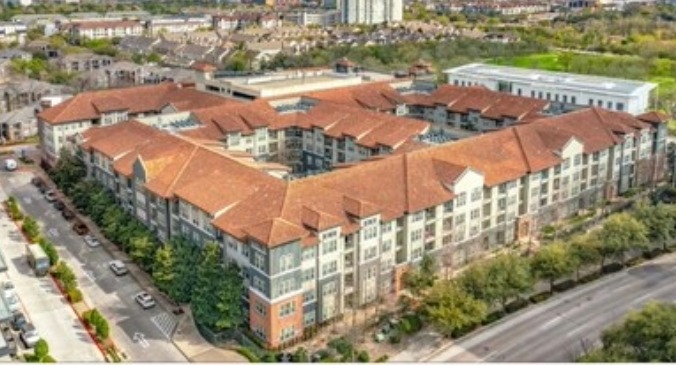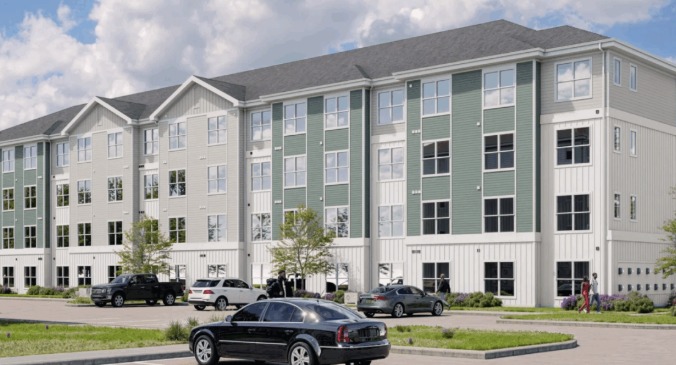Baseball, hotdogs and a Saturday afternoon at the ballpark. Life couldn’t get any simpler. That is, until you observe the person sitting next to you order another beer with his wireless handheld device, or the person sitting in front of him check her email using a laptop computer — both using the Wi-Fi connection provided courtesy of the stadium. It’s hard to avoid the presence of technology.
After some years with false starts and a few misfires, technology has taken up permanent residence in the apartment industry. With prudence, the industry’s adoption of certain technologies is transforming many of its traditional business practices — web-enabled property management systems, online marketing, web site leasing and automated rent payment programs.
Paralleling this evolution of change are significant advances in resident services such as digital television, broadband Internet and advanced telephone services, each growing in both demand and availability. Once considered simple utilities, they are now highly desired amenities. The level to which they are offered, the extent of their quality and pricing directly impact a property’s leasing and retention figures.
There is a central point where these two categories of technology, property operations and resident services connect, literally: the property’s wiring infrastructure. Understanding the infrastructure, as well as the technology depending on it, is critical to creating a successful technology plan for any property or portfolio. Its age, type, capacity and condition are either an asset or impediment to a company’s successful use of technology and technology-based services.
PROPERTY ASSESSMENT
Fortunately, the type of wiring infrastructure required to optimize the use of certain technologies for operating a property is the same for optimizing the delivery of advanced resident services. Whether upgrading the wiring on an existing property or installing it into new construction, the strategies for designing and installing communications wiring vary greatly in both. Issues such as the type of wiring to install, the different installation strategies to follow, the amount to install, types of outlets and their locations must all be addressed.
Prudence dictates that before addressing any changes in infrastructure, it is first necessary to study the existing infrastructure on a property or in the blueprints. It is essential to have a firm understanding of the current voice, video and data services available on a property, as well as those services that could be made available in the future. And finally, understanding the existing or expected resident demographic — current use of technologies and advanced services — is an essential component of creating a comprehensive assessment of a property’s need and or capacity for change in its wiring infrastructure.
When evaluating existing wiring infrastructure it is important to inspect the leasing office as well as the residential buildings. Understanding the details for each building is essential to developing a plan for modifications, should these be required.
A good practice to establish for examining each of these buildings is to use customized checklists, each with the capacity for extensive note taking. It is also a good idea to use digital photography for areas such as equipment closets. As for who can perform these inspections, maintenance staff are often skilled and knowledgeable enough to tackle the job. To assist them, it is possible the property’s cable and telephone companies will provide an engineer or technician to assist in pointing out where the wiring is, its associated devices, the type of wiring and how it is installed, free of charge. Another resource is a low voltage contractor — someone who is certified and thoroughly understands the nuances of wiring infrastructure on apartment properties.
Items to consider when inspecting wiring infrastructure are (1) the type of wiring used between and within each building (i.e., category three or category five copper wire, RG59 or RG6 coaxial cabling); (2) method in which the wiring was installed — whether it’s looped or home-run; (3) where the cable television and telephone company distribution boxes are located outside and within the building: (4) placement and total number of cable and telephone outlets within each unit; and (5) status of existing contract/s between the cable television, telephone and or Internet service provider/s, as well as services they provide.
While there is a complex host of issues to be addressed with researching, designing and installing wiring for voice, video and data services (telephone, cable and Internet), it’s sufficient enough to know that such a process should be approached prudently and with a thorough understanding of all the issues to be addressed. A good beginning is to understand the basics about the two primary types of communications wiring on a property — telephone and cable television.
MA BELL
Copper telephone wiring referred to as “category three” is the type most commonly installed for telephone service for the past several years. And while there have been a few changes in manufacturing, this wiring has essentially remained the same for many years. Nearly every apartment property in the U.S. has installed category three wiring.
As broadband, high-speed Internet technologies and services have advanced, many property owners are now installing category five wiring, rather than category three. Category five wiring not only functions well for voice services, but is the hallmark standard for broadband and computer networks — possessing a tenfold capacity for bandwidth and speed when compared to category three wiring. This greater bandwidth is required for some of the current technologies and services used for both property operations and resident services.
When evaluating an existing property’s infrastructure it’s not always necessary to replace category three wiring with category five. It’s possible that if residents and leasing staff are able to access high-speed, DSL (digital subscriber line) service from the local telephone company, a service delivered over category three wiring, upgrading the existing wiring may not be necessary.
CHANNEL SURFING
There are two main types of cable television wiring — RG59 and RG6 coaxial cable. In the same manner as category three and category five wiring, RG59 is the oldest and most prevalent type installed on seasoned multifamily properties. Most developers and cable companies adopted the routine practice of installing RG6 wiring a few years ago. The differences lay in which type of RG6 — i.e., quad shielded v. tri shielded, bonded braid v. non-bonded braided.
As the technologies for television and the Internet began to merge into services such as digital video and high-speed cable modem services, the push for RG6 was essentially mandated. The physical properties of RG6 are significantly superior to RG59 for the purpose of delivering high quality digital video and broadband Internet services.
MAKING THE CONNECTION
Understanding a property’s wiring infrastructure — existing properties or new projects still in the early planning stages — is one part of creating a successful technology blueprint.
“For a number of years we’ve continually developed, modified and implemented a best practices standard for low voltage infrastructure on our properties. The investment is as ubiquitously focused on property offices as it is on the residential units,” says Lori Reeves, VP of Information Technology at Forest City Residential. “This, combined with maintaining vigilance over the evolution of both operations technologies and advanced resident services permits us to leverage quality wiring infrastructure into an asset.”
Few have invested more in the research, testing, installation and management of quality structured wiring than Reeves and Forest City. Redeveloping the 7.5 square miles of Denver’s Stapleton Airport — a landmass one-third the size of Manhattan — requires significant attention to matters such as wiring infrastructure and technology. When completed, the development will contain retail centers and office buildings, 8,000 single-family homes, 4,000 multifamily units, a charter high school and the Denver School of Science and Technology. Stapleton is a place where the marriage of infrastructure and technology is paralleled only by places such as Disney World.
“If you want to take advantage of the services and efficiencies available on the information highway, you have to build the on ramps. Structured wiring is the on ramp, the physical enabler for IP (Internet Protocol) based applications. For the past 24-36 months many of us have been watching and waiting for property operations and management technologies to mature and perform to the capacity of the infrastructure we’ve installed. We’ve been waiting to see if our predictions about the need for quality wiring are correct,” says Reeves.
Tech-talk aside, everything from web-enabled property management systems, online marketing, web site leasing and automated rent payment programs, to sub-metering and advanced security and energy management technologies reach their fullest potential when delivered over current, quality wiring infrastructure. To invest in anything less limits the capacity of both the technology and the company it serves. Determining which technologies to purchase and implement is a daunting task.
INFORMATION IS KEY
“Before a company moves toward implementing technologies such as next generation property management software, or integrating multiple business process applications such as automated rent payments or security systems, a comprehensive business and technology assessment should be done,” says Dave Cardwell, VP of Finance & Technology at the National Multi Housing Council. “Each company differs in its needs and benefits of certain technologies. While it is important to understand the impacts on budgets and resources to deploy and manage these systems, it is just as important to understand the inherent business process changes that result. It is critical to assess the changes in management, corporate and property interaction, as well as oversight and the desired changes in how business is conducted before researching the various products and providers in the market.”
There are numerous resources available for addressing wiring infrastructure issues. One such resource is BICSI, an organization that has written the book on voice, video and data wiring infrastructure (www.bicsi.org). BICSI provides access to standards, certified contractors and multiple educational opportunities.
Unfortunately, a centralized resource does not exist for learning about the various property management and operations technologies. The Internet has become an excellent method for researching companies and technologies to determine which of these are right for your company or property. For asset and property management systems, the National Multi Housing Council hosts a highly secured, property owner-members only listserv where colleagues freely exchange information about the many products, their benefits, weaknesses and overall performance.
In addition to Internet research, conferences such as the apartment industry’s annual technology education conference to be held November 7-9, 2004 in Houston, are an invaluable resource. For many, this is the one time a year they network with colleagues, vendors and experts to help determine where they currently are or need to be with respect to studying, purchasing and implementing technology.
Those willing to develop a disciplined approach to studying their properties, corporate operations, current technologies and their uses, will find a clear path to successfully deploying technology.
Author: Larry Kessler
















